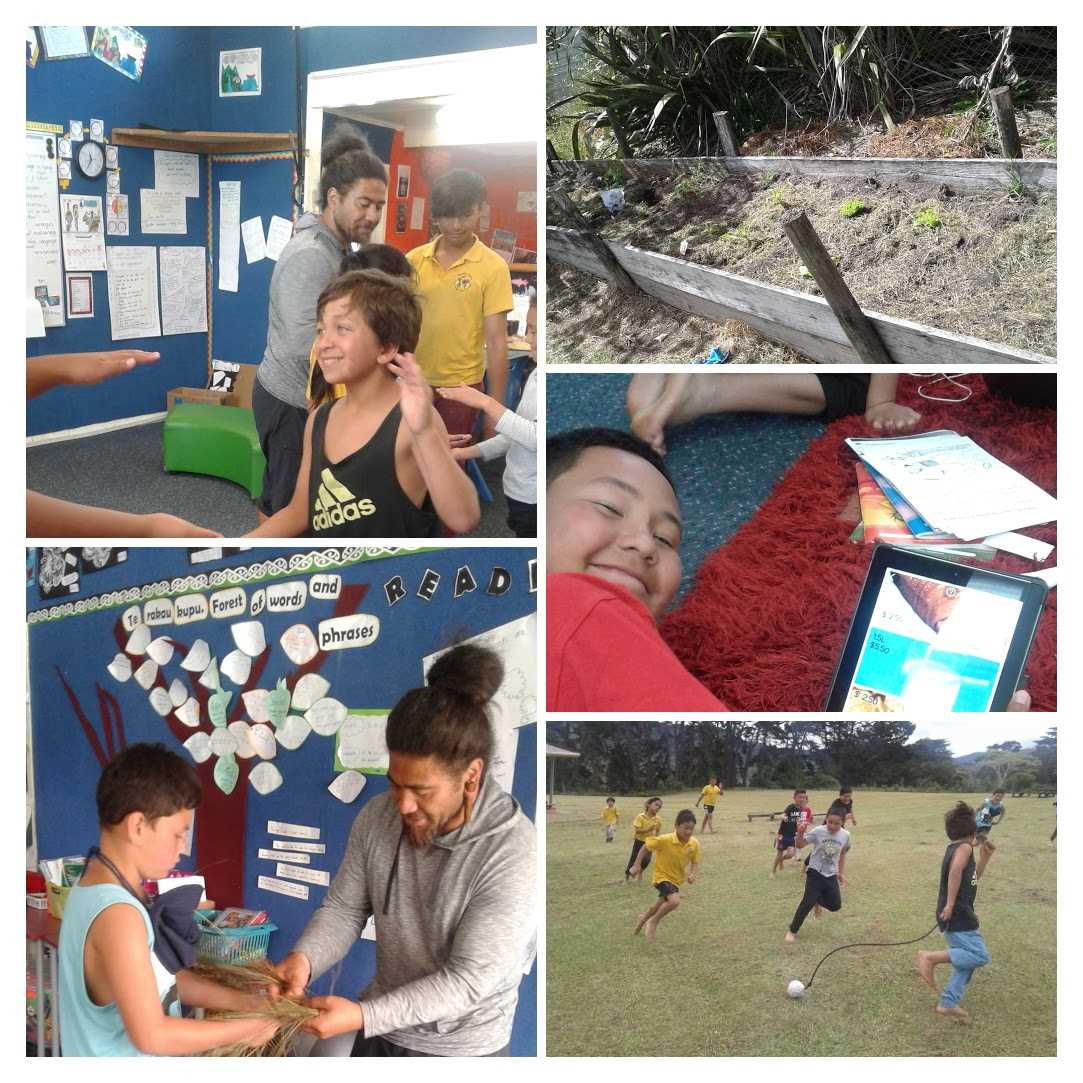


Learning Outside Classroom is Invaluable

Whakawhanaungatanga is a guiding value of Herekino School and was the focus in term four. The school staff wanted to embrace and educate their kids in Te Reo me o nga tikanga whilst covering all essential curriculum areas and utilised local gifts and knowledge to do so.
With awhi from community organisations, Herekino have created an environment that is allowing their tamariki to explore and learn through a Te Ao Maori lens - pushing the boundaries of the typical “classroom”. This kaupapa is fully supported by their local whanau and friends. Papa Wiremu from Te Rarawa visits the school every Wednesday and brings with him an enormous kete of knowledge. He fits into the classroom kaupapa seamlessly with his little chats and input on all subjects from maths to literacy and science – in almost all areas he touches on, he intertwines aspects of physical activity into. There is no “set” plan for his visits. He simply works in alongside the teachers to re-inforce their kaupapa or topic from a Maori perspective. The staff of Herekino School along with Papa Wiremu are paving the way for students to utilize and value their local environment, ensuring they are informed around tikanga and kawa local to their whenua.
The Kai Community
It was identified that occasionally there were students coming to school with no lunch and a solution recognised was that lunches could be pre-made every Monday with local resources to cater for this. To make this solution more sustainable, the kura would develop community gardens to allow whanau to have access to healthy kai and no cost.
Students were tasked with identifying the possible things they might need for their gardens. Suitable soil, suitable planting areas and questioned, is this land productive? Is it safe? They were asked ‘what do we want to plant so we are able to fully utilize this in our school and community. Can we make sandwiches out of this and where will these plants come from? Can we source off-cuts within our community?’
With the help of Papa Wiremu, who has taken the kura for walks through their ngahere, students have decided on a site for their gardens. They have cleared the existing raised gardens and tested the soil for acidity levels to plant accordingly. Planting has commenced with students rearing from seedlings. Seeds are now being grown and measured.
It’s Maths as Well!
It’s not only measuring plants that helps numeracy learning! Energizer Deanna saw first-hand how the need for healthy lunches has turned into a budgeting exercise with students investigating how does my whanau eat? How can I ensure we feed our whole whanau across a time period on a set budget? Where will my kai come from? While most identified supermarkets, some children chose to purchase things like bait and petrol as essential items – to allow them to gather kaimoana to feed their whanau.
This budgeting exercise integrated a whole lot of curriculum areas like Maths, Health, Social skills and Te Reo Maori. Teacher Virginia had spoken to students about splitting their money up, fractioning it up to make budgeting easier. They were asked to identify needs (items that are essential) and then wants (things that would be nice). Papa Wiremu showed the children an exercise about fractioning with his harakeke ropes. He also used fractions and Maramataka to demonstrate eating patterns and energy patterns as a Maori framework.
Wants vs Needs
After lunch, a session was followed up by addressing some of the children’s lists. They were identifying needs vs wants, thinking about their body and it’s nutrition needs. Do we need this food or is it a want? This rolled into Papa’s session about the Maori moon cycles and energy levels and discussed cycles of marama and kaimoana gathering and planting. This links back into the work with fractions with discussing full moons and half-moons.
Then the physical component of learning begins. First up a hand game, representing the flip of the moon cycle. Then outside for traditional Maori games using natural and minimal equipment such as rocks, sticks and woven ropes. The students are encouraged to explore these games all with minimal rules and equipment but with high engagement levels. Teachers are able to modify the games according to skill level or personal needs of the students.

SPORT NORTHLAND
CDL Group Northland Sports House
97 Western Hills Drive, Kensington,
Whangārei 0112
info@sportnorth.co.nz
CDL Group Northland Sports House - 09 437 9600
McKay Stadium / Kensington Fitness - 09 437 4404



